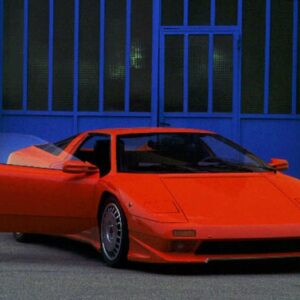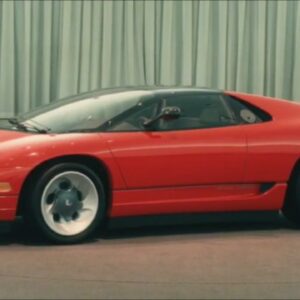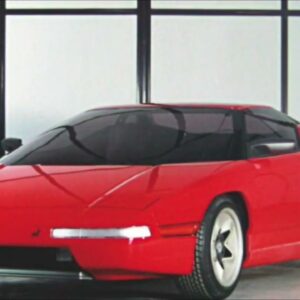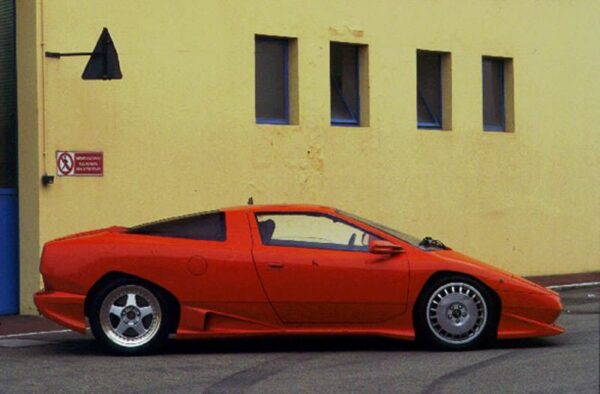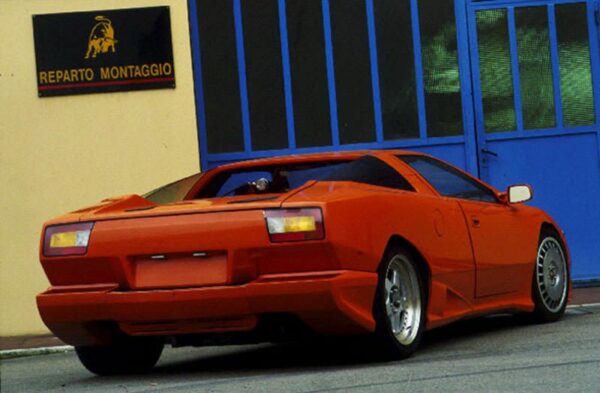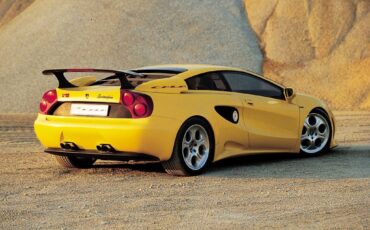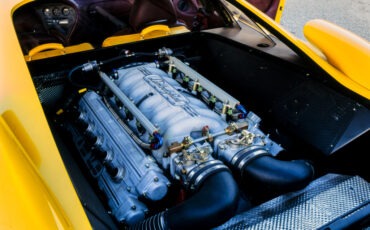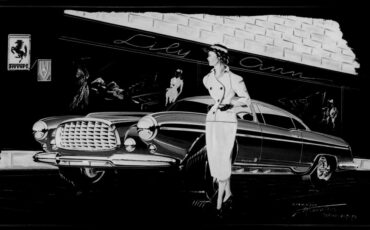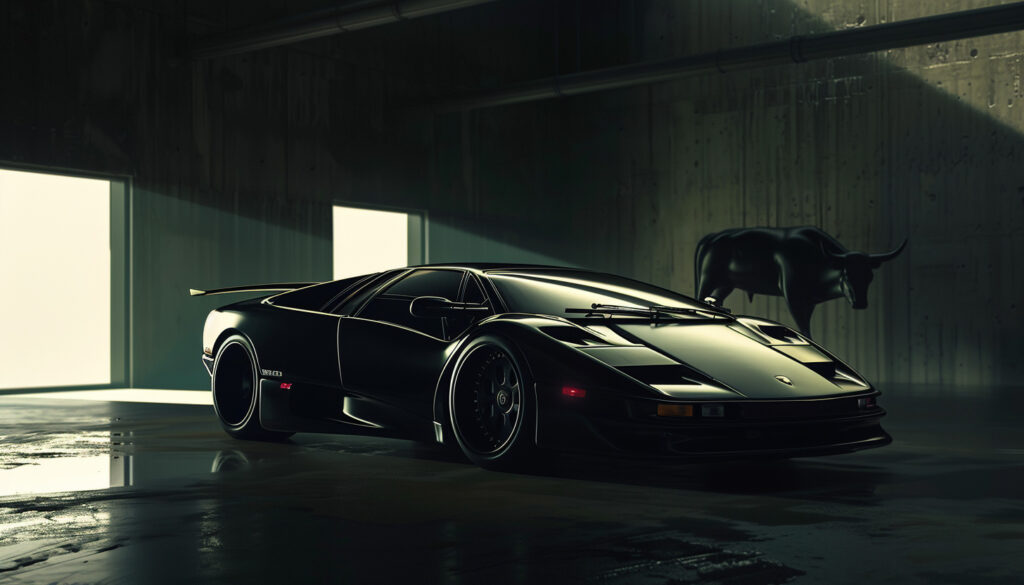
As Lamborghini approached the twilight of the 1980s, it faced the daunting task of succeeding the iconic Jalpa. The result was the internal project P140, a venture that transcended the mere replacement of a model; it was an ambitious exploration of design, innovation, and a relentless pursuit of the unmistakable Lamborghini spirit.
The Need for a New Icon
With the Jalpa bowing out in 1988, Lamborghini found itself in a market where German and Japanese competitors vied for attention in the same price range. The P140 wasn’t just meant to fill a void; it was a statement – a bold proclamation that Lamborghini would not only match the performance of its rivals but surpass them with an unparalleled fusion of speed and distinctive style.
To bring this vision to life, Lamborghini collaborated with Carrozzeria Bertone, Chrysler Design Center, and the acclaimed Marcello Gandini. Preliminary scale models hinted at the design possibilities, and Lamborghini sought to encapsulate the essence of the Miura and Countach in the new P140. The goal was clear – an attention-grabbing design that oozed speed and remained unmistakably Lamborghini.
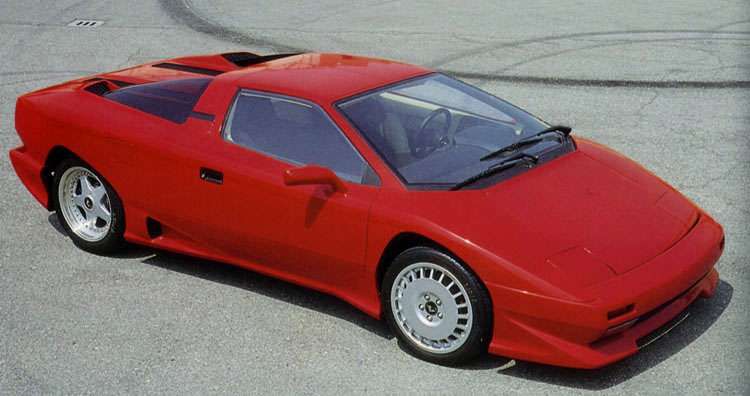
Innovative Engineering
The P140 wasn’t content with a mere aesthetic overhaul; it demanded cutting-edge mechanics. Lamborghini’s engineers embarked on a seven-month sprint to create the heart of the P140 – a revolutionary V-10 QuattroValvole engine with electronic fuel injection. Lightweight, compact, and modern, the engine underscored Lamborghini’s commitment to performance excellence.
The design journey took an interesting turn with Marcello Gandini’s involvement. After initial proposals from Bertone, Gandini, a designer with a storied history with Lamborghini, reshaped the P140 into a wedge-shaped 2-door coupé. The result was a harmonious synthesis of Lamborghini’s heritage and a forward-thinking aesthetic, featuring a 4.0-litre V10 engine, an ergonomic dashboard, and extensive use of aluminum.
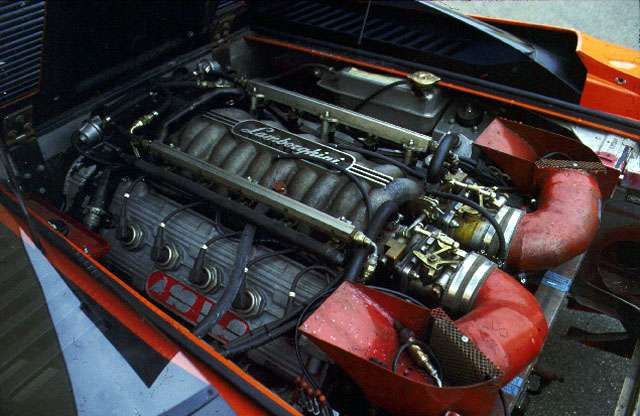
As the project advanced into the 1990s, Lamborghini’s parent company, Chrysler, faced financial headwinds due to the Gulf Oil Crisis. Concerns about the P140’s ability to justify its development costs and attract customers in uncertain economic times led to a momentary halt in its progression.
Despite financial challenges, Lamborghini managed to produce 3 to 4 P140 prototypes. Each prototype, whether painted orange, red, or white, embodied the spirit of innovation. These prototypes, though initially forgotten, became a testament to Lamborghini’s commitment to pushing boundaries, reaching top speeds, facing crashes, and later being enshrined in Lamborghini’s official museum.
The Unexpected Turn: The Lamborghini Calà
By 1992, the P140 was temporarily shelved to prioritize other Lamborghini models like the Diablo. However, in a surprising twist, the P140 story found a new chapter in 1995 at the Geneva Auto Show. Italdesign unveiled the Calà, a rebirth of the P140. The Calà showcased a departure from the wedge-themed design, introducing a curvaceous carbon-fiber body with a targa top, reaffirming Lamborghini’s commitment to innovation.
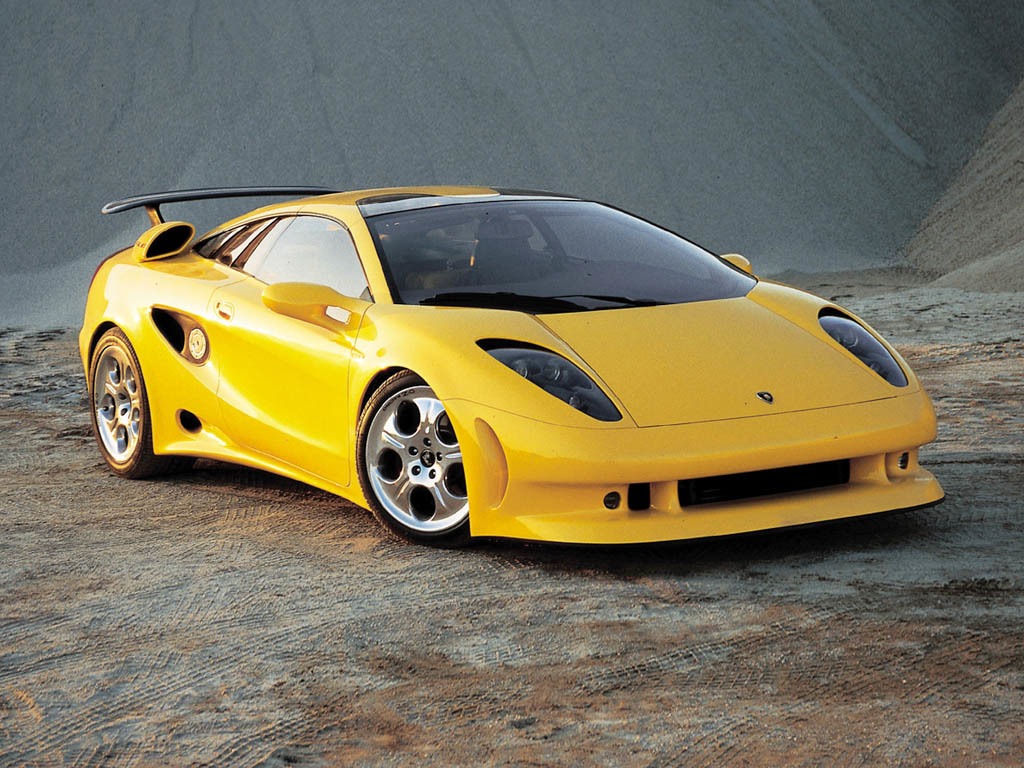
While the P140 project did not materialize into a production model, its legacy lived on through the Lamborghini Calà. The prototypes, once forgotten, became a testament to Lamborghini’s resilience in the face of challenges. The subsequent introduction of the Lamborghini Gallardo in 2002, with an evolution of the V10 engine used in the P140, marked a triumphant return for Lamborghini’s entry-level model. The P140 project remains a captivating chapter in automotive history, a tale of ambition, setbacks, and the enduring spirit that defines the Lamborghini legacy.

